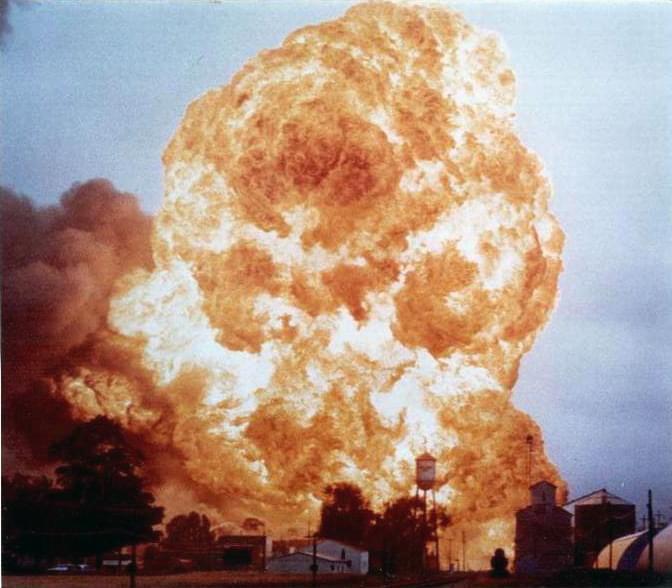
I got this document when I attended a National Fire Academy HAZMAT course in 1993. I came across it when looking for some old HAZMAT material for a new course I am developing and translated and cleaned up some of the language. It does an EXCELLENT job explaining the phenomenon we know as BLEVE (Boiling Liquid Expanding Vapor Explosion)
Crescent City, Illinois, propane explosion occurred in June of 1972 when a freight train with numerous propane cars derailed in the town. The resulting explosion leveled approximately half the city. The water tower in the foreground was over 100 feet tall.
In the past, many firefighting personnel have died and been injured as a result of transportation accidents that led to BLEVES of liquefied flammable gases. Fire Departments are normally the first public agencies to be notified when such accidents occur and accept the responsibility for taking the actions necessary to minimize injury and loss of life and property.
The incidents described in this presentation involve liquefied flammable gases and railroad car containers. BLEVES have occurred in trucks and fixed tanks containing flammable liquids or gases, and the explosions or fire behavior has been similar.
Several key points need to be discussed, which should help you understand the mechanism of these incidents and their possible effects. A good understanding is necessary to make intelligent decisions to minimize the hazard to life and property.
BLEVES can occur in containers of liquids or liquefied gases when a portion of a container is subjected to localized heating. A mechanical BLEVE of containers of liquefied gases can also occur without fire temperature (HOT BLEVE), if an object strikes the metal or fails because of mechanical damage (COLD BLEVE).
